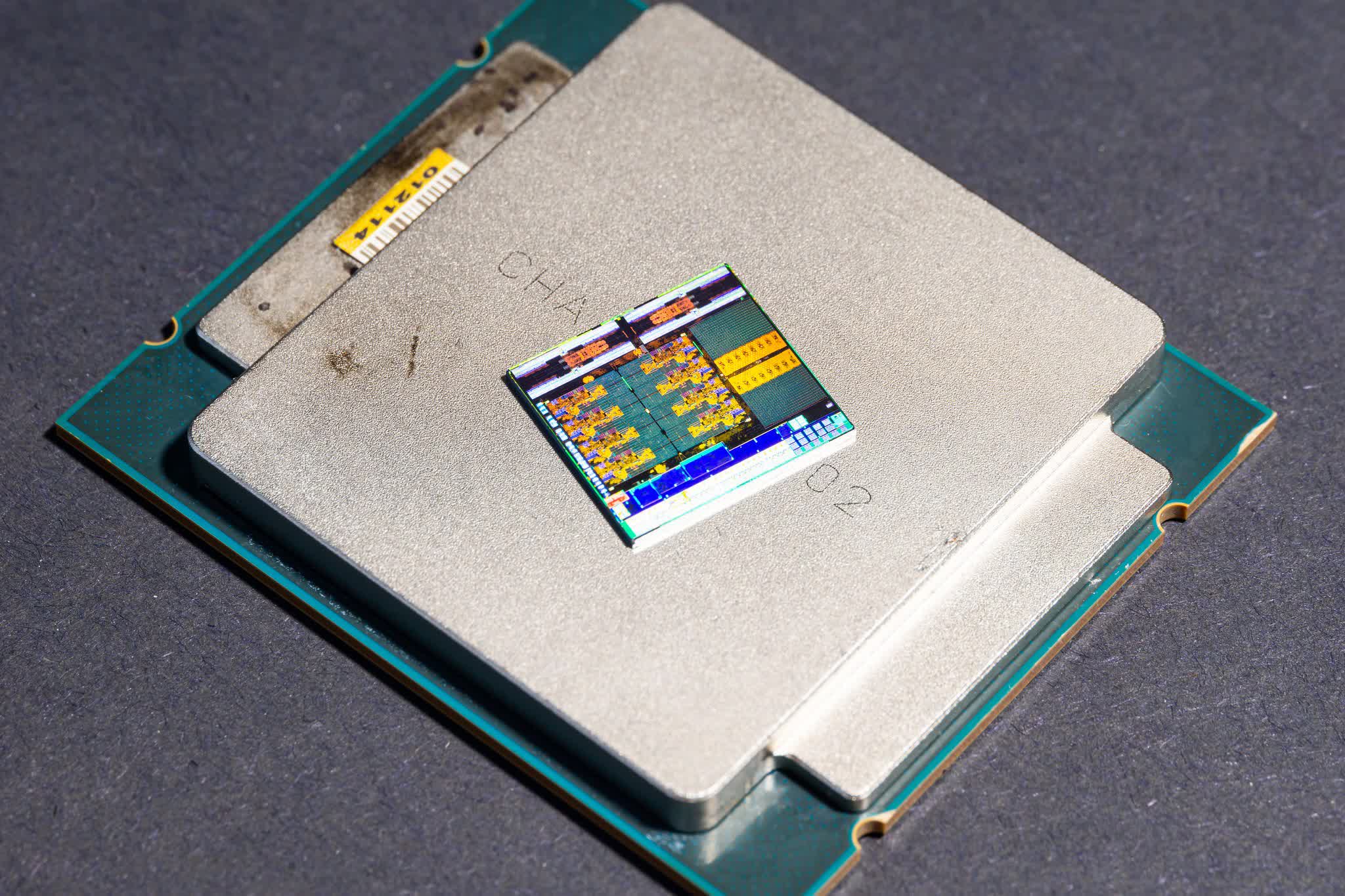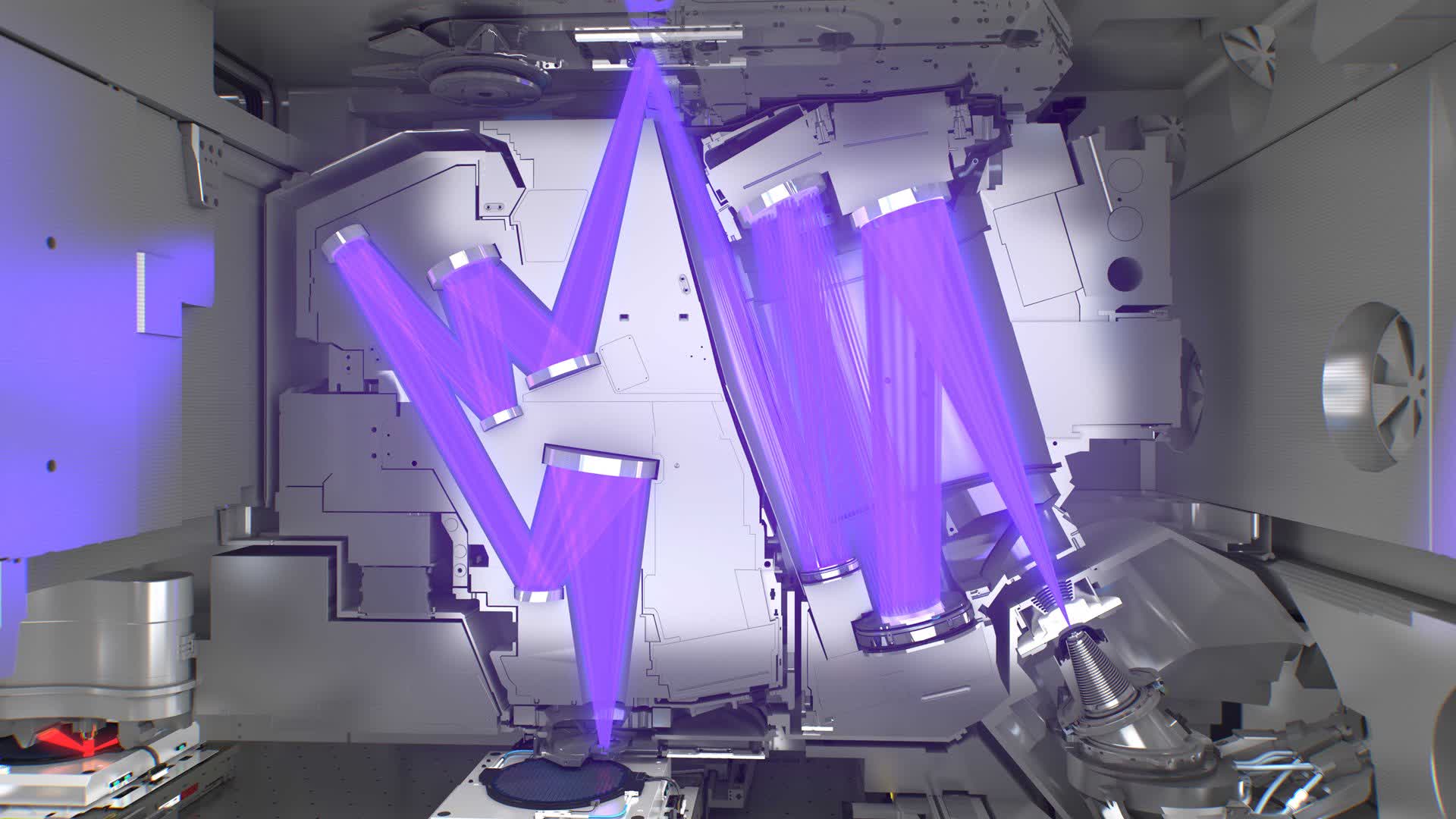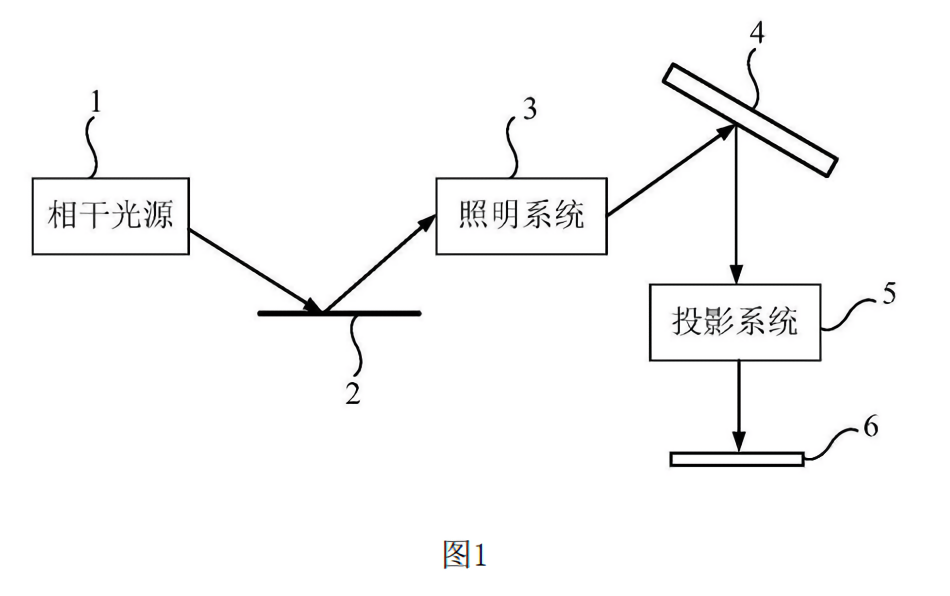In context: Lithography machines are some of the most complex and expensive used in chip manufacturing. They generate steady beams of light in the ultraviolet spectrum and filter that light until it resembles the inverse of the floorplan of a microprocessor. They focus and point the light at a photosensitive wafer with a degree of precision in the tens of nanometers to carve out the floorplan.

Huawei has patented one component used in EUV lithography systems that is required to make high-end processors on sub-10 nm nodes. It solves the problem of interference patterns created by the ultraviolet light that would otherwise make the wafer uneven.
Huawei has solved an issue in the last step of chip manufacturing that's caused by the tiny wavelengths of extreme ultraviolet (EUV) light. Its patent describes an array of mirrors that split the beam of light into multiple sub-beams that collide with their own microscopic mirrors. Each of those mirrors rotates differently to create different interference patterns in the light so that when they recombine, the interference patterns cancel out to create one uniform beam.

A render of the mirrors inside a lithography machine. Via ASML.
EUV lithography systems are currently made exclusively by Dutch company ASML. EUV lithography relies on the same principles as older forms of lithography but uses light with a wavelength of about 13.5 nm, which is almost an X-ray. ASML generates the ultraviolet light from fast-moving droplets of molten tin that are about 25 microns in diameter.
Also read: The Art of Making Chips Smaller
"As they fall," ASML explains, "the droplets are hit first by a low-intensity laser pulse that flattens them into a pancake shape. Then a more powerful laser pulse vaporizes the flattened droplet to create a plasma that emits EUV light. To produce enough light to manufacture microchips, this process is repeated 50,000 times every second."

A diagram of the mirrors from Huawei's patent.
ASML needed more than €6 billion and 17 years to develop the first batch of EUV lithography machines that could be sold. But before they were finished, the US government pressured the Dutch government into banning exports to China, restricting the nation to the older DUV (deep ultraviolet) technology. For now, only five companies are using or have announced plans to use ASML EUV lithography systems: Intel and Micron in the US, Samsung and SK Hynix in South Korea, and TSMC in Taiwan.
Chinese companies like Huawei were previously able to send their designs to fabs like TSMC for manufacture with EUV lithography. But since the US imposed sanctions on China that has been decreasingly possible. Huawei needs access to the advanced nodes that use EUV lithography to continue to improve on its custom processors, which target everything from smartphones to data centers. It has a long way to go before it can make its own EUV systems but they are receiving plenty of capital and support from the government to get there.
Masthead credit: Fritzchens Fritz
https://www.techspot.com/news/97072-huawei-patents-euv-lithography-tools-used-make-10nm.html